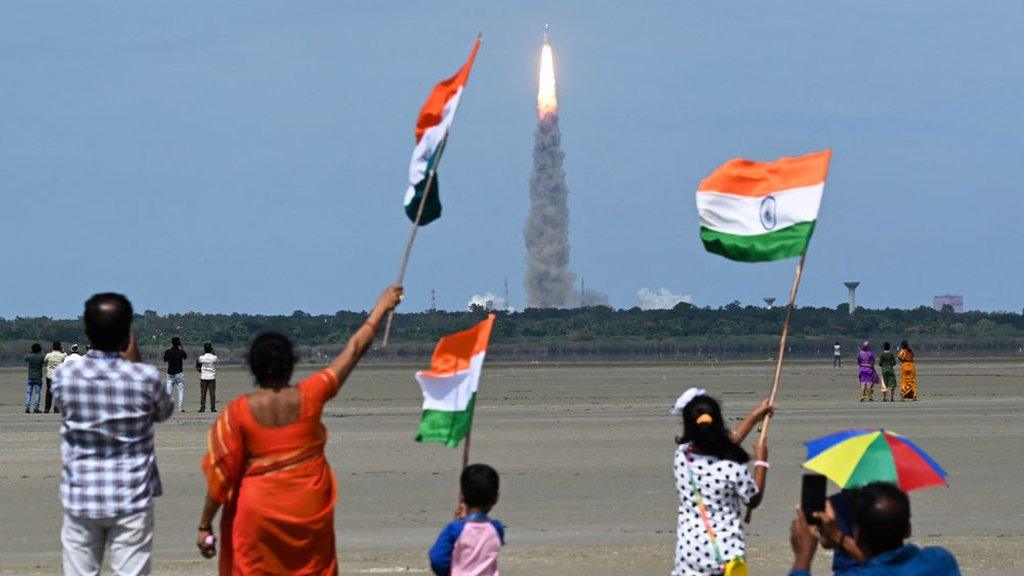India lands on the Moon's south pole with Chandrayaan-3 space mission Chandrayaan-3
- Published
- comments
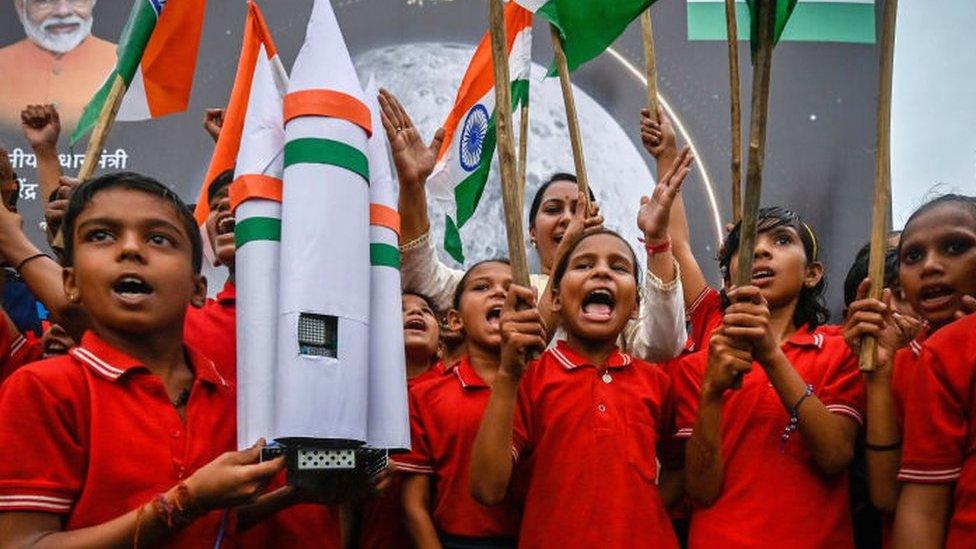
India has become the first nation to land near the Moon's south pole.
The Chandrayaan-3 mission has been declared a success as the Vikram lander touched down at 1.34pm UK time on Wednesday 23 August.
The Moon's lunar south pole is covered by shadow and largely unknown. Just days ago Russia's Luna-25 shuttle failed to touch down on the same mission.
If frozen water is found on the south pole, scientists say humans could be one step closer to inhabiting the Moon.
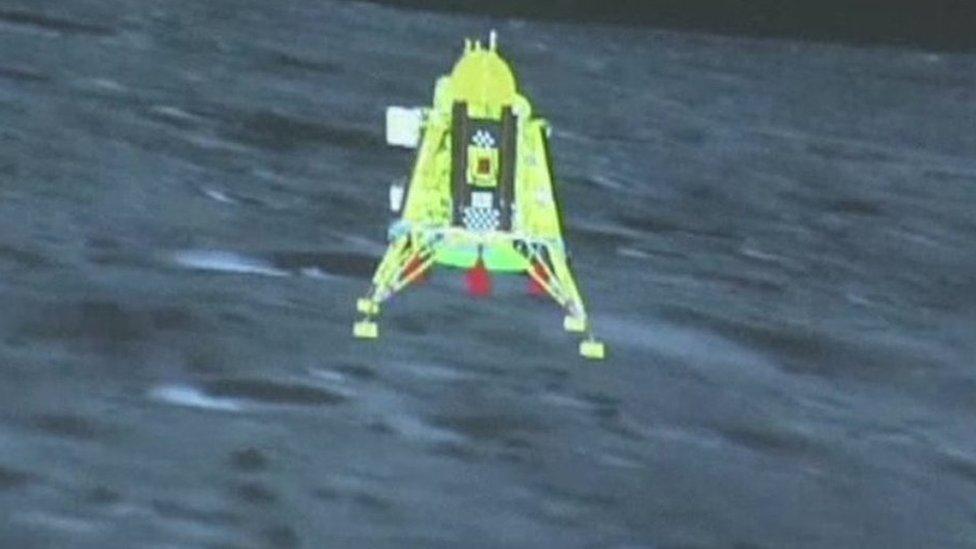
Chandrayaan-3's lander touches down on the lunar surface
"India is now on the Moon" announced India's Prime Minister Narendra Modi.
The prime minister congratulated the Indian Space Research Organisation saying "the sky is not the limit".
He said that the lunar landing was a success for the whole world, adding "India's successful Moon mission is not India's alone."
India's President Droupadi Murmu said that this is a "once in a lifetime" event and that India's scientists "have not only made history but also remade the idea of geography."
What is the Chandrayaan-3 mission?
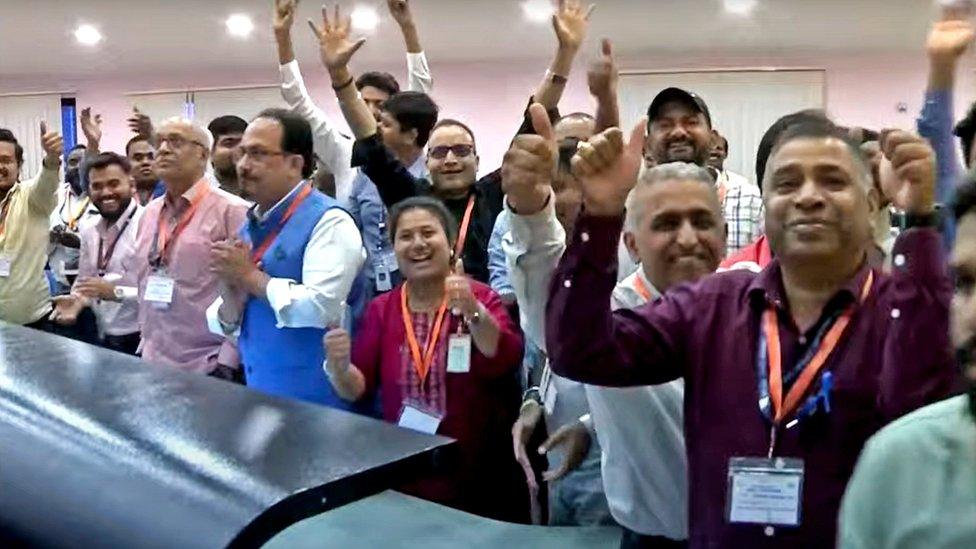
Celebrations from the control room on Earth!
It is India's third Chandrayaan mission. Both Chandrayaan-1 in 2008 and Chandrayaan-2 earlier in 2019 failed to successfully land.
But today people around the world are celebrating the first landing near the Moon's south pole. And the fourth ever soft-landing on the Moon.
The spacecraft with its orbiter, lander and rover lifted off on 14 July
It orbited Earth a few times before entering lunar orbit on 5 August
Russia's similar mission ended unsuccessfully earlier this week as their lander crashing into the Moon.
What are scientists hoping to find on the Moon's south pole?
Once the dust has settled, Pragyaan rover on board the lander will set off and begin to crawl around the craters and rocks of the Moon's surface.
The six-wheeled rover will hunt for ice and other signs of water - snapping pictures and taking measurements and other data to be sent back down to Earth.
This is because scientists believe craters that are permanently in shadow on the dark side of the Moon may hold frozen water.
The success of Chandrayaan-3, I believe, is also a major achievement for the whole of human kind.
Why has no-one landed on the Moon's south pole before?
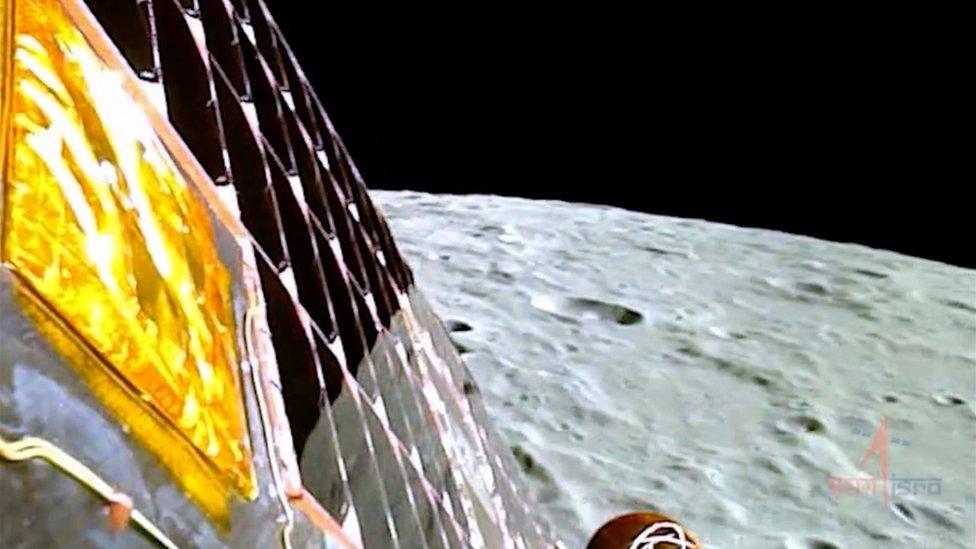
One of the latest images sent by the Vikram lander
The lunar south pole is the less explored part of the Moon. Nasa described the area as "a mystery".
It's full of craters and boulders, which scientists say makes landing much harder. Russia's Luna-25 spacecraft attempted to land in the same area, but crashed after spinning out of control.
There have been successful landings near the Moon's equator, but never as far south as today's landing.
The area is covered in a permanent shadow, which means very little is known about it. But scientists think if there is ice it could mean a more permanent base for humans on the Moon is possible - because humans need water to survive.
Can humans live on the Moon?
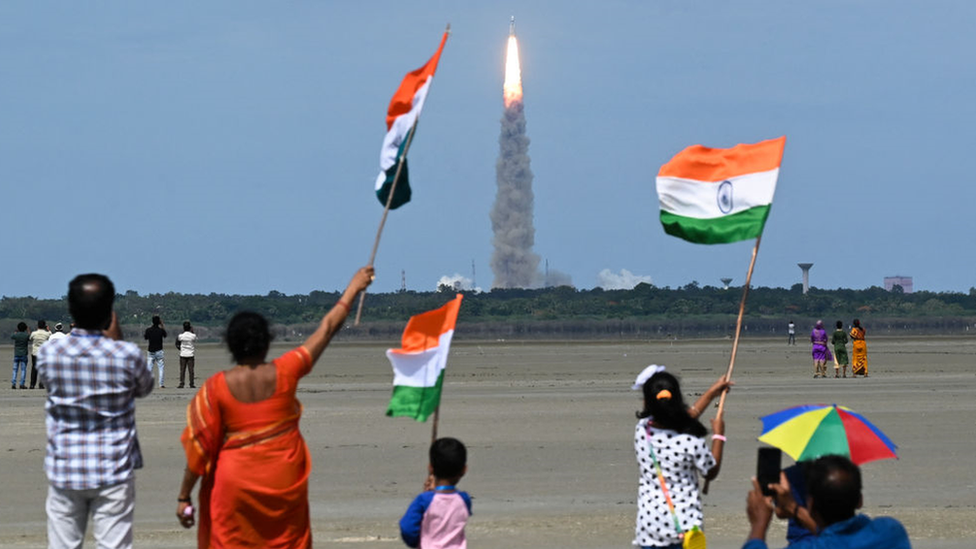
Five scientific instruments are being sent to the Moon to learn more about its surface and below.
Experts used to believe that the Moon was completely dry but traces of water have been detected on its surface before.
One of the major goals of the mission is to find a supply of water or ice around the lunar south pole.
If it exists there is the potential to use water to drink, grow food, cool equipment and even as fuel.
Water is a necessity for furthering human exploration because it could potentially be used for drinking, cooling equipment, breathing and making rocket fuel for missions farther into the solar system.
What do you think of the achievement? Let us know and send your congratulations in for the mission team in the comments below.
- Published22 August 2023
